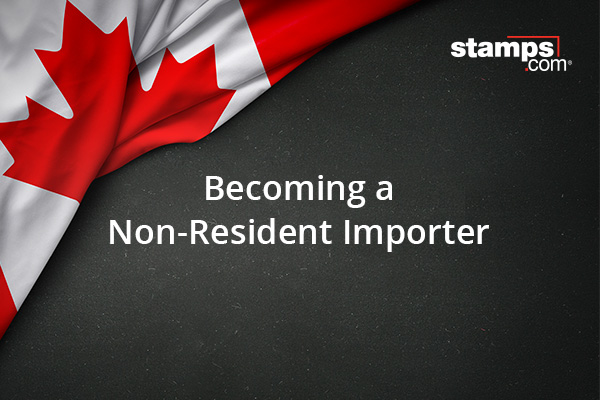
The European Union (EU), a group of 27 countries including Germany and France, will be implementing new trade rules for U.S. sellers beginning July 1, 2021. The EU has modified the Value-Added Tax (VAT) – a tax on goods and services bought and delivered to the EU countries. Sellers in the U.S. will need to understand how to comply with these new laws and prepare for the changes.
What changes to the EU VAT will take place on July 1, 2021?
Prior to July 1, 2021, no VAT fees were required for commercial goods valued up to 22 euros (approximately $26). Goods valued at 22 euros or less were able to be shipped into EU countries with no additional fees required for buyers.
After July 1, 2021, all goods imported to the EU valued at up to 150 euros (approximately $178) will be subject to VAT and items valued at more than 150 euros will be subject to VAT and duties. VAT rates are different for each EU country based on the service and type of product being delivered, with most VAT fees ranging around 20% of the total cost (sales price plus shipping).
| Product Price | Until June 30, 2021 | Starting July 1, 2021 |
| €0 – €22 | Exempt – No VAT required | VAT applied (with IOSS for B2C, or upon import for B2C/B2B) |
| €23 – €150 | VAT applied upon import | VAT applied (with IOSS for B2C, or upon import for B2C/B2B) |
| Above €150 | VAT applied upon import | VAT applied with duties (Upon import, Standard VAT Payment) |
What are my options for collecting VAT for EU countries?
The new rules give sellers two options:
#1 Preferred Method: Import One-Stop Shop (IOSS): The EU member countries have created a new electronic portal for B2C transactions, known as the IOSS, which makes it easier for online retailers to comply with the new VAT rules. This program is intended to help expedite the Customs and VAT collection process and allow the EU buyer to see the full landed cost including the VAT fees at the point of sale (i.e. inside the shopping cart). Businesses will need to register on the IOSS portal, provide an IOSS tax identification number during Customs creation and provide the recipient’s email and/or phone number along with a Harmonized System (HS) Code for the product being shipped. Online retailers only need to be registered with a single EU member country via the IOSS system to access trading within all 27 EU countries.
Additionally, retailers will need to establish an “intermediary,” a representative located in any one of the 27 EU countries who, representing the online retailer, will submit the VAT payments each quarter as well as process any returns.
Important Note: The IOSS portal is NOT required for U.S. sellers. It is an optional program intended to expedite e-commerce order delivery to EU countries, while collecting VAT efficiently. U.S. sellers who do not register for IOSS will have their packages delivered Delivery Duty Unpaid, meaning the buyer must pay VAT and potential additional customs clearance fees before the shipping carrier will release their package.
#2 Delivery Duty Unpaid (DDU): This option only requires the recipient’s email or phone number, an accurate product description and a HS Code. The downsides to shipping orders using DDU are that if the VAT is not paid at the shopping cart, the buyer in the EU country becomes responsible for paying the fees before they can receive their product. Buyers could get “buyer’s remorse” due to high extra fees required to receive their product and abandon the order, asking for a full refund.
Additionally, not using the IOSS system can cause items to be held up in customs for lengthy periods of time until the VAT is paid. Overall, this option will lead to a poor customer experience and reflect badly on your business.
Selling to International Buyers using a Marketplace?
Online retailers using marketplaces such as Amazon, eBay and Etsy will have a separate set of VAT rules. Marketplaces are considered to be involved in the sale and supply of goods, and thus the EU is requiring the marketplace to be liable for collecting and paying the VAT fees. Starting July 1, 2021, Marketplaces will collect VAT from the buyer based on the country of delivery and remit it to the responsible tax authorities. Note: VAT will be collected on the full value of the transaction including shipping costs, as the shipping costs are considered part of the total purchase.
What about Customs Forms?
Your formal customs declaration will now require more information about the items you are sending. Pro forma and commercial invoices must provide clear and accurate data including a description of goods, the quantity of items, itemized values and custom tariff codes. It is also recommended that you provide an accurate product description and HS Code. GlobalPost Logistics has a free tool that generates HS codes for any product using the World Customs Organization schedule.
What steps should I take now?
Merchants need to register with the IOSS portal before July 1, as well as find a VAT intermediary like Hellotax, Simply VAT, Taxually or Avalara. Next you will need to make sure your shopping cart has the capabilities to collect VAT at the point of purchase. Most shopping cart vendors are preparing for the July 1, 2021 deadline and have set up special tax rules inside the cart settings page. If you use Shopify, check out the information under “Setting up EU taxes” in the help center section on their website.
Final thoughts.
Registering with the IOSS portal and selecting an intermediary can help your business generate brand loyalty and customer retention by creating a hassle-free VAT collection. July 1 is right around the corner, so make sure you set yourself up for success by complying with these new tax rules.


